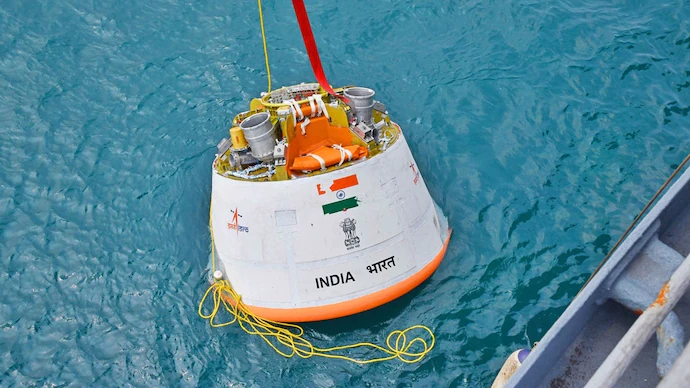At the February 20, 2025, PRISM 2.0 webinar, “Unlocking Trade Potential in India-Australia Space Collaboration,” India and Australia reiterated their commitment to strengthening their strategic relationship in space exploration. The goal of this effort, which was organized by the Space Industry Association of Australia (SIA-Australia) and the Space Industry Association of India (SIA-India), was to promote trade and strengthen regulatory frameworks in a number of space-related industries, including satellite software and hardware.
Through a recently signed agreement between the Australian Space Agency (ASA) and the Indian Space Research Organization (ISRO), Australia has formally committed to supporting India’s first Gaganyaan mission. Prime Ministers Anthony Albanese and Narendra Modi stressed the two countries’ growing space relationship at the second Australia-India Annual Summit, which formalized this partnership.
Cooperation for crew and crew module recovery operations is the main focus of the Implementation Arrangement, especially in cases where missions may need to be canceled over Australian seas. This covers the recovery of the crew module in the event that it lands in the Southern Ocean as well as search and rescue operations for the astronauts.
By launching a crew of up to three astronauts into orbit at a height of 400 kilometers for three days, the Gaganyaan mission seeks to showcase India’s human spaceflight capabilities. Since its introduction in 2018, the mission has been a component of India’s larger Human Spaceflight Program.
Other potential for cooperation are being investigated by both nations, such as joint space industry projects and the 2026 launch of Australian satellites on Indian rockets.
Following a number of uncrewed missions and preparatory tests, the Gaganyaan mission is anticipated to begin no early than 2026. Successful trials for recovery operations, which are essential for guaranteeing astronaut safety throughout the trip and are carried out by ISRO in partnership with the Indian Navy, are among the recent advancements.
This collaboration not only strengthens the Gaganyaan mission’s technological capabilities but also represents a critical turning point in India and Australia’s international space cooperation.
helping to ensure the Gaganyaan crew module is recovered safely, particularly if it lands in Australian seas. Supporting search and rescue efforts is part of this.
Establishing a tracking station on the Cocos (Keeling) Islands to monitor the trajectory of Gaganyaan flights. Essential tracking, telemetry, and control features will be offered by this station.
utilising Australia’s experience in remote medical and work in Antarctica to contribute knowledge in the biological sciences and applied space medicine.
The crew module may land in the Southern Ocean, which is notorious for its erratic weather patterns and choppy seas. These elements may make recovery more challenging, making it more challenging to find and securely retrieve the module.
Recovery operations become more complicated if the crew module’s re-entry and landing do not go as expected (off-nominal situations). In certain situations, it can be necessary to rely on foreign staff, which presents coordination issues because these teams might not have received the necessary training for particular recovery techniques.
For recovery activities to be successful, Indian and Australian officials must coordinate and communicate effectively. During recovery operations, this involves following standard operating procedures (SOPs) to avoid problems like propellant contamination or explosions.
It is crucial to guarantee that recovery teams have sufficient training for a range of situations. However, it can be logistically difficult to educate staff from different nations, which could result in readiness gaps during actual recovery operations.
The operation is under additional pressure to restore astronauts as soon as possible while causing them as little suffering as possible. Recovery plans must be carried out effectively because any delays could jeopardize the crew’s safety and wellbeing.

